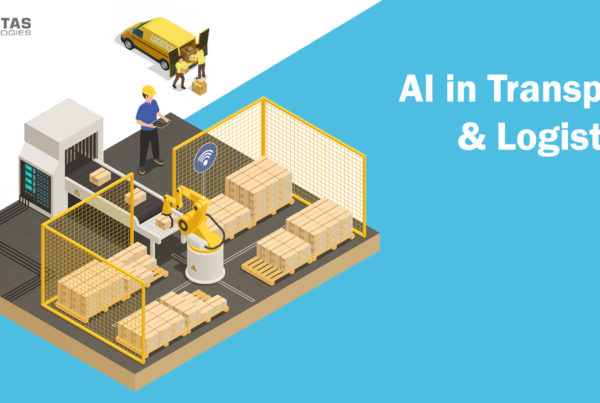
Machine vision applications equipped with Artificial Intelligence have spread the wings across all the industries, be it manufacturing, automotive, FMCG, or pharmaceutical. Innovation and adaptations are primarily significant for businesses to evolve digitally, and this is where Qualitas Technologies comes to the scenario. Intensive research efforts have already been established in the field of Artificial Intelligence (AI) and Machine Learning (ML).
Various industrial segments are potentially utilizing AI-backed technologies to stay ahead of the competition. However, here, we will talk about
Three very prominent Machine vision applications that are solved by using Artificial Intelligence. These applications include:
- Defect Identification
- Character Reading
- Processing Natural Products
Let’s understand these three areas of Machine Learning and how Qualitas Technologies innovations have contributed to these applications.
Defect Identification
A defect is an unacceptable anomaly that occurs when the product departs from its proposed design. It is essential to identify and detect defects on time to prevent facing consumer disappointment at a later stage. Defect Identification based on machine vision can improve the efficiency of industrial processes to a great extent.
Automated surface anomaly identification and detection have become promising areas, and deep learning methods have become suitable for this particular approach. Defect Detection is an important part and plays a vital role in setting up and maintaining industry-specific quality control.
The main objective is to detect any defect to prevent the production of defective products such as dents, cracks, broken points, smudges, etc. Whether it’s about the manufacturing of engineered tools or developing precision automotive components, frequent quality checks are the key to maintain the visual appearance and ensure proper functionality.
How Automated Defect Detection Helps?
Qualitas Technologies offers competitive Machine Learning solutions that help to identify such defects and prevent them right on time. The solutions integrate Artificial Intelligence that results in instructing and training the system for detecting defects accurately. Using a human-like approach, it’s easier to teach the system about unacceptable anomalies.
Until recently, defect detection was done manually. However, a manual inspection can be subjective as it is based on the inspector’s experience and exposure to the object. Sometimes, subtle defects that appear on lower surfaces are not visibly defined; hence manual procedures can prove to be obsolete.
The automated AI-driven defect detection solutions can potentially identify such anomalies in no time. Automated defect detection solutions powered with artificial intelligence provides extended opportunity to significantly improve the quality of the product while reducing operational cost.
Related Article: Pizza topping inspection using Deep Learning
Character Reading
Optical Character Recognition helps to identify and read characters printed on the automotive parts such as chassis, packaging labels, credit cards, etc. OCR machines are widely used for identifying, verifying, tracing, and tracking the character codes. It uses machine learning technology to ensure the accuracy and correctness of transcripts and packaging labels.
The application areas include pharmaceutical manufacturing, healthcare industry, radiology or radiotherapy, clinical trial research, behavioral modification, electronic health recordkeeping of patients, disease identification and diagnosis, etc. It supports multiple fonts and characters, as well as functions efficiently in an error-free manner. Character reading is majorly used for traceability purposes in the pharmaceutical and FMCG industry across the globe.
Machine Learning-Driven OCR Technology
Qualitas Technologies is helping businesses in transforming their processes, and OCR is one such example. Character Recognition solution uses deep learning and advanced character identification algorithms that make it feasible for use across different industries and applications. OCR solutions developed using AI technology is capable of optimizing character recognition tasks, majorly in the pharmaceutical and healthcare sectors.
OCR technology brings along numerous benefits that include easy to understand the point and click interface, faster processing time, and highly accurate results in comparison to traditional character reading techniques. The solution equips an advanced set of rules that makes it capable of reading multiple styles of characters, even if the images incorporate different characteristics.
Processing Natural Products
Machine Learning methods have become highly useful than ever for quality evaluation in combination with sensing devices. The technology allows for practical and quick assessment of the quality of food components based on actual data. It’s significantly crucial to determine the quality of the raw material to specify grading.
Food security and food quality are undeniably the most factious concerns that demand attention and quick consideration. Using deep learning technology, food items, fruits, staple items, and raw material are tagged with standard grades. The food items are graded based on quality. It’s essential to keep these items intact as per the grading throughout the packaging and delivery process.
Automated AI-Powered Grade Specification System
Qualitas Technologies, with years of experience in machine learning, has developed a multi-spectral food grading tool. The solution helps FMCG companies and other relevant sectors to detect and specify food grades and ensure quality. When a batch of a food item is collected and brought over to the warehouse for packaging, it passes through an automated system that performs image capturing, scanning, and finally grading.
Grading of the product is done through object detection and shape detection. These food grading systems for Processing Natural Products, built using the latest machine learning technologies, are transforming businesses across the globe.
Register For Our Upcoming Free Webinar





